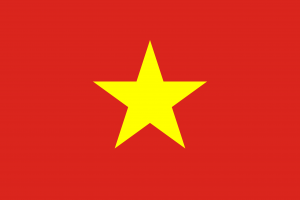Language/Vietnamese/Grammar/Gender
Hi Vietnamese learners! 😊
In this lesson, we will learn about gender in the Vietnamese language. Vietnamese does not have grammatical gender like Romance languages do, but there are still some differences between male and female speech. Let's take a closer look!
Once you've mastered this lesson, take a look at these related pages: Past Tense Verbs & Nouns and Gender.
Male and Female Speech in Vietnamese[edit | edit source]
While Vietnamese does not have grammatical gender, there are still some differences between male and female speech. For example, women tend to use softer and more polite language, while men tend to use stronger and more direct language. However, this is not a hard and fast rule, and there can be many variations based on a person's background, education, and social context.
Another difference between male and female speech is the use of vocabulary. Women may use more words that are traditionally associated with femininity, such as flowers and beauty, while men may use more words associated with strength and power, such as weapons and military terms.
Personal Pronouns[edit | edit source]
In Vietnamese, personal pronouns do not indicate gender. The word "anh" can be used to refer to both "he" and "she", while "em" can be used to refer to both "him" and "her". However, there are some cases where gender is indicated by word choice. For example, if you want to say "my sister" in Vietnamese, you would say "em gái tôi", which includes the word "em" to indicate that the sister is younger and female.
| Vietnamese | Pronunciation | English |
|---|---|---|
| anh | ʌ̃ | he/she/you (older brother or male) |
| em | ɛm | he/she/you (younger sibling, junior) |
| tôi | twɔj | I, me |
| bạn | ɓan | you, friend |
Nouns[edit | edit source]
Nouns in Vietnamese do not have grammatical gender, so there are no articles to indicate whether a noun is masculine or feminine. However, there are some nouns that are more commonly associated with one gender than the other. For example, "hoa" (flower) is often associated with femininity, while "con dao" (knife) is often associated with masculinity.
| Vietnamese | Pronunciation | English |
|---|---|---|
| hoa | hwa | flower |
| con dao | kɔn zao | knife |
| bút | buht | pen |
| xe đạp | se dap | bicycle |
Adjectives[edit | edit source]
Adjectives in Vietnamese also do not have grammatical gender, but there are some words that are more commonly associated with one gender than the other. For example, "đẹp" (beautiful) is often associated with femininity, while "nam tính" (manly) is often associated with masculinity.
| Vietnamese | Pronunciation | English |
|---|---|---|
| đẹp | ɗɛp | beautiful |
| xinh đẹp | sin ɗɛp | pretty |
| nam tính | nam tɨŋ | manly |
| yếu đuối | jɛw ɗwɔ̆ʲi | weak |
Examples in Context[edit | edit source]
Let's see some examples of gender in context:
- Person 1: Em ấy đang xem phim. (She's watching a movie.)
- Person 2: Gì thế? Phim gì vậy? (What? What movie?)
- Person 1: Bộ phim Titanic đấy. (The movie Titanic.)
- Person 1: Anh ấy rất nam tính. (He's very manly.)
- Person 2: Đúng vậy, anh ta là một võ sư giỏi đấy. (That's right, he's a skilled martial artist.)
How to Learn More[edit | edit source]
If you want to improve your Vietnamese grammar, you can also use the Polyglot Club website. Find native speakers and ask them any questions!
Sources[edit | edit source]
- Vietnamese grammar - Wikipedia
- Does Vietnamese have grammatical gender? If so, where is it used ...
- Why Vietnamese is easy – Vietnamese@UHM
➡ If you have any questions, please ask them in the comments section below.
➡ Feel free to edit this wiki page if you think it can be improved. 😎
Other Lessons[edit | edit source]
- Articles
- Nouns
- Negation
- How to Use Have
- Personal pronouns
- Conditional Mood
- Give your Opinion
- Tenses
- Plurals


